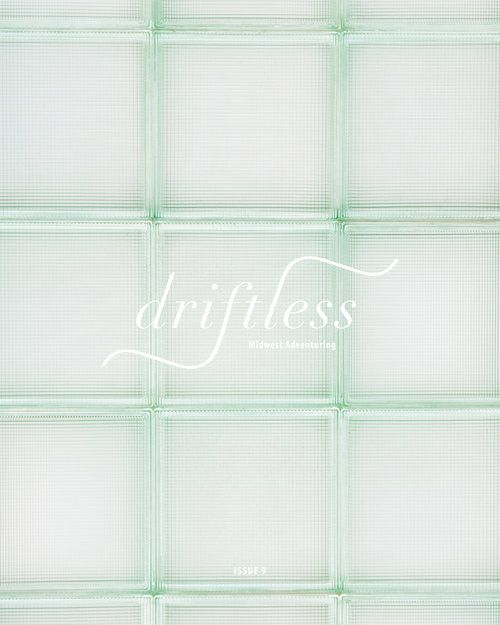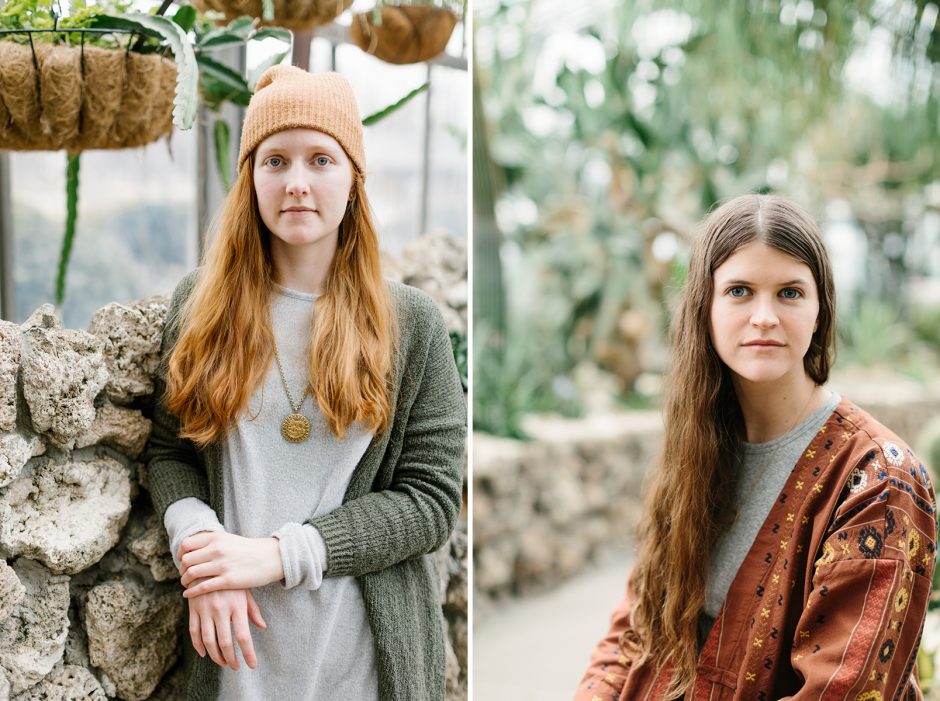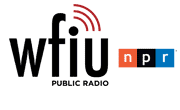
Cover, driftless Issue 9
What holds us in place, makes us stop, pause, linger? Something of the senses, perhaps – a sound, a smell, something we want to touch.
In the local cafes, gift galleries and bookstores that help us slow down and remember where we are, we may find a unique magazine called driftless – which has the subtitle, “Midwest Adventuring.”
Its content covers people, places, photographs and storytelling from 12 Midwestern States – along the Ohio River to the Canadian border, and to the middle of the prairies. The print journal’s aesthetic is simple, timeless design. Its quality in the reader’s hand is sold and elegant. The publishers and creative directors of driftless are Anna Powell Teeter and Leah Fithian – two professionals in photography, advertising, graphic design and journalism.
WFIU Arts reporter Shayne Laughter sat down with Anna Powell Teeter, who is a photographer, filmmaker and journalist in Bloomington, Indiana.

“I know when I graduated, a lot of my friends were moving to the East and West Coast,” Teeter says, “which seemed like a very natural direction for me to go. But I’d really found a sense of community in Bloomington that I really love, and just didn’t feel like I could leave quite yet. And so staying in the Midwest was really important to me, staying close to home and my family and friends and loved ones.”
The first issue was produced in 2014 with money raised from a crowdfunding campaign on Indiegogo. “From there it’s been a self-sustaining project,” Teeter says. “We sell enough copies to be able to print the next one, and so on. We do two issues a year, a Spring and Summer edition and then a Fall and Winter edition.” Issue 9 is now out. For Spring and Summer 2018.
Drift-what?
And what does “driftless” actually mean? It’s a geographical term, as Wikipedia reveals.
The Driftless Area is a region in Minnesota, Wisconsin, northwestern Illinois, and northeastern Iowa that was never glaciated. … The term includes the Paleozoic Plateau, which contains deeply-carved river valleys and extends into southeastern Minnesota and northeastern Iowa. … The region covers an area of 24,000 square miles. … Its rugged terrain is due both to the lack of glacial deposits, or drift, and to the incision of the upper Mississippi River and its tributaries into bedrock.
South Central Indiana is a driftless region, because back in the Ice Age, that glacier stopped in Morgan County, just north of Martinsville. The magazine’s creators had another idea for the word’s meaning.
“We conceptualized the term to talk about creative people who choose to stay here, instead of drifting to the east or west coast,” Teeter says.
One of their first decisions, Teeter says, was to define “Midwest,” which would be the range of their magazine’s reach. They quickly settled on the classic borders of the 12 states: Ohio, Indiana, Illinois, Missouri, Nebraska, Kansas, Iowa, South Dakota, North Dakota, Minnesota, Wisconsin, and Michigan. “Not every state is represented in every issue,” Teeter says, “but every state is represented at some point.”
Ironically, founder Leah Fithian moved to Chicago for her career a few years ago, requiring that the two women build a long-distance working relationship as business, design and production partners.
“At first that was a little frightening,” Teeter admits. “But it has been really valuable to have her in Chicago, because the business, the magazine, has representation in two states. We can be more places as a publication. She can be at events in Chicago, meeting people. I’m still here in Bloomington, going to events and doing things like this [interview].
“We have a lot of phone calls and a lot of FaceTime dates. We’re always texting back and forth. We build the magazine over video chat. We set aside a few hours every week and just work on it together.”
Fithian and Teeter rely on their contributors’ expertise and shared passion for design, craftsmanship and community in each state and area. “It’s just the two of us making this magazine,” Teeter explains. “We can’t be everywhere and we can’t know everything about the 12 Midwestern states.”
Face To Face In One Place
In the down time between issues, when they are receiving submissions for the next one, Teeter and Fithian hit the road for some direct marketing at craft fairs and art shows, and to raise production money from issue sales.
“We set up a booth with all of our issues. We get to introduce the publication to people, we get to meet artists from different areas. It’s a lot of fun for us,” Teeter emphasizes, “to be able to share the project with people. I think that when you see the magazine in person, and get to hold it and flip through it, versus seeing the cover image on our web site, it’s a really different experience.”
In Summer 2018 they’ve been to events in Chicago, Cincinnati, Bloomington, Indianapolis and Wisconsin. “Traveling around, visiting our stockists, the retailers who sell our magazines, is always very fun for us. We try to do that as much as possible,” Teeter says.
This is another part of Teeter and Fithian’s vision for driftless – the magazine is something people want to slow down for; pick up; explore.
That tactile introduction to driftless is another design decision by Fithian and Teeter. The solid quality of the paper and the exact precision of the images comes from Spencer, Indiana, where World Arts Printing gets it done.
“They did such a beautiful job,” Teeter enthuses. “The appearance and the way it feels in your hand is really, really important to us. We aim to create a magazine that is kind of a work of art within itself. We hope that when you read it, it will live on your coffee table or your book shelf, or will be gifted to a friend after it’s read.”
Teeter and Fithian felt that excellence in printing was something they owed to their interview subjects.
“The craftsmanship of the work we publish is so beautiful, we felt that we had to [present] it in the most beautiful way possible,” Teeter says. “The whole project is absolutely rooted in Midwestern values, which Leah and I were both raised on. Be honest. Be kind. Be useful. Be responsible. Respect everyone. Work hard. The people that we feature in this magazine definitely encompass those values as well.”
Knowing that not everyone in the Midwest pops into a bookstore very often, Teeter and Fithian chose to put the magazine where people go for a bit of slow beauty: cafés, galleries and boutique retailers.
“The environment in which people do get to experience the magazine is important,” Teeter says, “but I think more important than that is that you get to experience it at all. We do get a lot of submissions from readers who [say], ‘I just found your magazine at this bookstore, or Rainbow Bakery, or wherever they come across it. That’s a huge, valuable thing for us, because that’s another person who reads it, that’s another person who knows someone who would be a perfect fit for the magazine. Another Midwestern thing, word of mouth! Telling friends, sharing it with people that you know.”
Right now, driftless is stocked throughout the 12 Midwestern states that provide the content. “We don’t have any retailers outside the Midwest,” Teeter says. “That is something that we’re open to. We just don’t know how it’s going to be received outside the Midwest. So we have not traveled outside the Midwest, promoting the magazine … yet,” she adds, pointedly. “We feel we need to strengthen our representation in this region.”
The Business Model Less Traveled
The sponsors listed on the driftless web site are the people who contributed to the Indiegogo campaign, and helped produce driftless Issue 1. Teeter says these names will always be on the web site, because “we are forever grateful to them.”
Besides the exemplary quality of the content and print production, driftless is obviously a passion project for a reason you may not notice at first.
There are no advertisements in these pages.
“We are an ad-free magazine, which we definitely pride ourselves on,” Teeter says. “Back when we were talking about the design and the overall aesthetic of it, putting advertisements in magazines is something that we did not want to do. We didn’t want to distract the reader at all from the content that we are publishing. We wanted this entire piece to be it’s own independent piece of art. Obviously that’s a harder business model to sustain. We do sell our magazine at a premium price point, thinking that our readers would rather pay a little bit more for an issue and get 100 pages of content, versus it being five dollars, and 40 percent of the magazine is advertisements. That was just a decision we made at the beginning, knowing that it was not the easiest decision. But we are a self-sustaining business. We work really hard to sell our back issues, to be able to pay for new issues. It’s worked out really well so far.”
Without advertisements, how do Teeter and Fithian walk the line between journalism about businesses and entrepreneurs, and “advertorial” copy?
“That’s a really good question,” Teeter admits. “Leah and I create about three or four features per issue. Those are businesses or individuals we know about and have a really unique and interesting story that we just really want to tell. We go about features typically in the interview format. We do get comments about that, people thinking that those are ads, in kind of an indirect way. But they are stories that we want to tell, businesses that we want to feature. We are a contributor-based magazine. There are no direct advertisements in driftless, and anyone is welcome to submit to it, and try to get their work featured in it.”
The content is heavily visual, but that is changing slowly. “Leah and I are both photographers, so naturally we have a lot of images from our travels in the Midwest that we publish,” Teeter says. “Written work is something that we are starting to receive more and more of. Our most recent issue definitely has the highest amount of written work that we’ve ever published, including a really beautiful piece of fiction. Typically we receive more personal narratives or writing about a sense of place for a city guide. “
The Fall-Winter 2018 issue, Number 10, is still receiving submissions at this writing. Teeter says many of the articles will be stories they’ve held onto from previous submission windows.
“I’d like to encourage everyone to submit work that they have,” Teeter says. “I think that people oftentimes think that the work isn’t complete enough or good enough, and that’s just not true. Even if they don’t send us a complete submission, we can very easily add that into a bigger feature on makers in their area, or a city guide. There’s always room for collaboration with us. That’s something I would like to see more of, people reaching out to us and letting us know about the work they’re creating.”
You can have a non-tangible experience of driftless at the magazine’s website.
For WFIU Arts, I’m Shayne Laughter.






